Research Projects
(For Early Career Research Fellowship projects click on this link here)
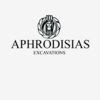
Aphrodisias
Funded by:sponsors listed here
Principal Investigator: Prof Bert Smith

CAVES Africa Project
Funded by: Leverhulme Trust
Principal Investigator: Prof Nick Barton

Celtic Coin Index Digital (CCID) project
Principal Investigator: Prof Chris Gosden
Digging Market Garden project
Funded by: University of Oxford
Principal Investigator: Dr Tim Clack

Falklands War Mapping Project
Funded by: University of Oxford, FIMNT and Waterloo Uncovered
Principal Investigator: Dr Tim Clack
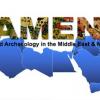
EAMENA: Endangered Archaeology in the Middle East and North Africa
Funded by: The Arcadia Fund, and, the Cultural Protection Fund
Principal Investigator: Prof Andrew Wilson

The Golden Empire: Geological Expedition and Analysis Programme
Funded by: Leverhulme Trust and various (see project page)
Co-Investigator: Dr George Green

Sir John Evans (1823–1908) and the Hallstatt Collection at the Ashmolean Museum
Funded by: The Prehistoric Society Collections Study Award
Principal Investigator: Dr Courtney Nimura

HEIR - Historical Environment Image Resource
Funded by: Revan & David Logan Foundation. Citizen Science Alliance, John Fell OUP Research Fund
Co-Investigator: Dr S Crawford and Dr K Ulmschneider

HORSEPOWER: China, Mongolia and the steppe
Funded by: ERC
Principal Investigator: Professor Chris Gosden

New Bantu Mosaics
Funded by: ERC
Principal Investigator: Prof Shadreck Chirikure

Oxford Centre for Maritime Archaeology (OCMA)
Funded by: Hilti Foundation
Principal Investigators: Prof Andrew Wilson and Dr Damian Robinson
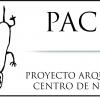
PACEN: Archaeological Project of Central Nicaragua
Funded by:
Principal Investigator: Dr Alexander Geurds
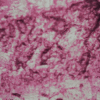
pLASAR: Portable Laser Ablation for Archaeological Research
Funded by: Fell Fund, Ashmolean Museum, Dept. of Engineering (University of Oxford)
Principal Investigator: Dr George Green

The Practical Mariner Project
Funded by: Augmentum
Principal Investigator: Dr Linda Hulin
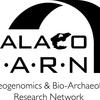
PALAEOBARN: Palaeogenomics and Bio-Archaeology Research Network
Funded by: various
Principal Investigator: Prof Greger Larson

Raja Ampat Archaeological Project
Funded by: Various
Principal Investigator: Dr Dylan Gaffney
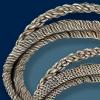
Silver and the Origins of the Viking Age
Funded by: ERC
Principal Investigator: Dr Jane Kershaw

Understanding Authenticity in China's Cultural Heritage
Funded by: Various
Principal Investigators: Dr Anke Hein and Dr Christopher Foster
Completed Projects
Androna/Andarin: The Oxford Project
AHOB - The Ancient Human Occupation of Britain
Architectures of Displacement: Exploring the lived experience of temporary accommodation for refugees in the Middle East and Europe.
Atlas of Hillforts Project
BALMS: Bronze Age Landscapes and Metalwork in Sweden
Crop stable isotope ratios: New approaches to palaeodietary and agricultural reconstruction
CUISINE: An innovative approach for the study of culinary practices in past societies
Cultivating Societies
Dating of the Middle-Upper Palaeolithic transition in western Europe using ultrafiltration AMS radiocarbon
A Diet for all Seasons: the role of intra-annual variability in the evolution of hominin diet in East Africa
Dorchester-on-Thames (Field school excavation)
The Easter E.G. Project: Shifting Baselines and Changing Perceptions of Cultural and Biological “Aliens”
Ebb and Flow
Economic integration and cultural survival at Neolithic Çatalhöyük, Turkey
English Landscape and Identities (EngLaId)
The Environmental Archaeology of Pompeii and Herculaneum
European Celtic Art in Context: Exploring Celtic art and its eastern links
Feedsax: Feeding Anglo Saxon England. The Bioarchaeolgy of an Agricultural Revolution.
EXPLO - Exploring the dynamics and causes of prehistoric land use change in the cradle of European farming
FLAME: Flow of Ancient Metals across Eurasia
Gallo-Belgic Pottery in Britain
The Jacobsthal Archive Project - Persecution and Survival
Knossos Gypsades Excavation
Click on the project titles below to access various online resources from these past projects.
The OXALID database published on this website will include lead isotope data for ore deposits and archaeological artefacts analysed at the Isotrace Laboratory of the University of Oxford in the years 1978-2001. The data for ores was partly published in the journal ' Archaeometry' in the years 1995-1998, much of the other data included in OXALID has also been published, but it is believed that bringing together all these data on one website in digital format will provide a useful resource for students and academics using lead isotope provenance studies for tracing the development of patterns of exploitation and trade of mineral based man made materials.
| Houghton Down |
| Grateley South |
|
|
| Thruxton |
|
|
| Rowbury Farm |
|
|
| Flint Farm |
|
|
A Conference at Queen's University Belfast
31st May - 1st June 2007
Organisers: Nicki J. Whitehouse¹, Rick Schulting² and Meriel McClatchie³
¹ Archaeology and Palaeoecology, School of Geography, Archaeology and Palaeoecology, Queen’s University Belfast, Belfast, BT7 1NN. Email: n.whitehouse@qub.ac.uk
² School of Archaeology, University of Oxford. 36 Beaumont Street, Oxford, OX1 2PG. Email: rick.schulting@arch.ox.ac.uk
³ Institute of Archaeology, University College London, 31-34 Gordon Square, London WC1H 0PY. Email: m.mcclatchie@ucl.ac.uk
The links below are to extended abstracts provided by the authors.
Rick Schulting and Nicki Whitehouse — Living Landscapes: An Introduction
Alison Sheridan — Latest thoughts on the Mesolithic-Neolithic transition in Ireland and Britain: a tale of French connections
Lydia Zapata and Alfonso Alday — The Early Neolithic in Northern Iberia
Sue College and James Connolly — The development and spread of Neolithic crop based agriculture from southwest Asia to northwest Europe
Amy Bogaard — Assessing the nature and role of Neolithic cultivation in central Europe and Britain
Meriel McClachtie — Cultivating Societies: assessing the evidence for cereal remains in Ireland
Richard Tipping, Althea Davies, Hilary Murray, Jane Bunting and Sandra Winterbottom — Special Places for Special Foods? Cereal Cultivation around an early Neolithic Timber Hall at Warren Field, Crathes, Eastern Scotland
Erika B.A. Guttmann — Geoarchaeology in the Céide Fields: assessing the nature and intensity of Neolithic land use
Conor Brady — A Landscape Survey of the Newgrange Environs: earlier prehistoric settlement at Brú na Bóinne, Co. Meath
Michael O’Connell, Karen Molloy and Anette Overland — New Perspectives on Neolithic Impact in Ireland
John Ó’Néill — Some thoughts on wild mammal ecology in Neolithic Ireland
Richard P. Evershed — Lipids as carriers of anthropogenic signals from prehistory
Finbar McCormick — Cattle and ritual in early Neolithic Ireland
Jessica Smyth —“Our Hidden Neolithic? Following the paper trail...”
Niall Roycroft — Neolithic salmon or beef?
Cormac McSparron —Irish Rectangular Neolithic Houses – a short-lived phenomenon?
Gordon Noble — Living Landscapes: Woodscapes in the Neolithic of Northwest Europe
Gabriel Cooney — Working with stone, making Neolithic landscapes
The organisers gratefully acknowledge the National Roads Authority (Republic of Ireland), the School of Geography, Archaeology and Palaeoecology (Queen’s University Belfast) for supporting the meeting, and the Institute of Archaeology (University of Oxford) for hosting the website.Rick Schulting and Nicki Whitehouse — Living Landscapes: An Introduction
The Gallo-Belgic pottery project was undertaken between 2003 and 2006. The project was funded by a Leverhulme Research grant administered through the Institute of Archaeology, Oxford University under the auspices of Barry Cunliffe.
One of the principal aims of the project was to compile a corpus of Gallo-Belgic pottery (terra nigra and terra rubra) found in Britain. An essential part of this work was to create a digital record of all known potter name stamps and marks. The data presented in the web site represents the first stage of dissemination. A monograph outlining the background to the industry, its forms and fabrics, chronology distribution and an interpretation of the results is currently in preparation.
To access the database visit the project website
The aim of the Roman Provincial Coinage series was to produce a standard typology of the provincial coinage of the Roman Empire from its beginning in 44 BC to its end in AD 296/7. The current Roman Provincial Coinage Online project is confined to the Antonine period (AD 138–192), but it is intended that it will form a model for putting other periods online in the future.
The database is based on the ten most important and accessible collections in the world, and on all published material. It comprises one of the largest collections of images and related inscriptions from the ancient world which is searchable by iconography, place, and time.
The database contains information on 13,729 coin types, based on 46,725 specimens (9,061 of which have images).
Access the database here
The county of Kent is exceptionally rich in Anglo-Saxon cemeteries. Systematic excavations of some of these cemeteries in the 18th and early 19th centuries provided a wealth of finds that reflect Kent's close political and economic ties to the Frankish world in the 5th to 7th centuries. Excavations by the Revd Bryan Faussett in 1757-73 uncovered c. 750 graves from sites at Crundale, Guilton, Kingston Down, Bishopsbourne, Barfrestone and Sibertswold Downs, Bekesbourne and Chartham Down. Further excavations, in particular those carried out at Bifrons and Sarre in the 19th century, raised the number of excavated graves to well over 1000. The bulk of information was made available to subscribers in the Inventorium Sepulchrale (Faussett 1856) and in the journal Archaeologia Cantiana.
In 1961, the need to re-publish this important material to a modern standard led Sonia Hawkes of the University of Oxford's Institute of Archaeology to undertake the publication of Kentish cemeteries as the first stage of a national monograph series, the Corpus of Anglo-Saxon Graves and Grave-Goods. Work carried out between 1961 and 1971 dealt with the c. 1140 graves and large numbers of unassociated objects from Bifrons, Sarre and the seven sites excavated by Faussett, resulting in an extensive archive comprising object descriptions, drawings, photographs and X-rays. The Bifrons burials have been posthumously published elsewhere (Hawkes 2000). This website, made possible by a grant from the is Arts and Humanities Research Council, makes the remainder of the archive widely available for the first time. It is hoped that it will enable future generations of researchers to gain a better understanding of the origins of the Anglo-Saxon kingdoms.
Visit the project website and access the database here
Directed by Gary Lock and Chris Gosden
The fieldwork for this project took place between the years 1994 and 2000 and formed the training excavation for archaeology students at Oxford University, both full-time BA Archaeology and Anthropology and part-time Continuing Education students.
The work focussed on three hillforts on the Ridgeway in southern Oxfordshire:
- Uffington Castle and White Horse Hil (1994-1995)
- Segsbury Camp (1996-1997)
- Alfred’s Castle (1988-2000)
Our interest is in the creation and development of these three major foci of activity through the later prehistoric and Romano-British periods and how they articulated with the landscapes around them. This area is rich in archaeological evidence for these periods and we have attempted to interpret our findings within this wider context of landscape understanding. For our ideas on how the landscape works in creating history see:
Gosden, C. and G. Lock 1998 Prehistoric histories, World Archaeology. 30.1, pp2-12.
And for a relational approach to landscape see:
Gosden, C. and G. Lock In press. The aesthetics of landscape on the Berkshire Downs, in C. Haselgrove and R. Pope (eds) The earlier Iron Age in Britain and the near continent. Oxford: Oxbow Books.
In 2001 this project transformed into the Vale and Ridgeway Project and the excavation shifted to Marcham/Frilford in the Vale of the White Horse, Oxfordshire.
Directors: Barry Cunliffe and Patrick Galliou
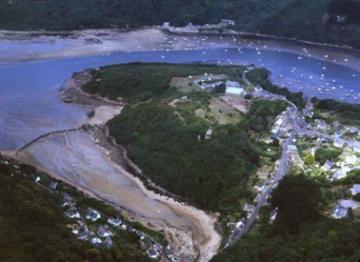
For full details, together with PDF files and appendices. Please visit the main project website:
http://projects.arch.ox.ac.uk/LYP1.html
Le Yaudet is a granite promontory guarding the estuary of the river Léguer on the north coast of Brittany. In medieval documents it is known as the ‘old city’ – a memory perhaps of its late Roman fortifications.
Archaeological material, in particular coins, found in the nineteenth century, focused attention on the site and in the 1950s and early 1960s some limited excavations were undertaken.
A new programme of research excavations began in 1991 and continued annually until 2002. The work was a Franco-British collaboration involving the Institute of Archaeology, University of Oxford and the Centre de recherche bretonne et celtique, Université de Bretagne Occidentale and was directed by Barry Cunliffe and Patrick Galliou.
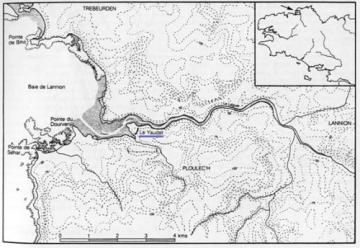
The excavation showed that the promontory had been in use almost continually since the Neolithic period. There is some evidence to suggest that it may have been defended in the Late Bronze Age. In the Late Iron Age a massive rampart (of three structural phases) defended the landward approach with a lesser rampart following the cliff edge.
Occupation continued into the Roman period and in the late third century a masonry wall was built following the line of the earlier rampart. There is little evidence of activity in the first half of the fourth century but by around AD 400 the site was again in active use and has been occupied ever since. The excavation produced extensive evidence of settlement and agricultural activities from the fifth to eleventh centuries and of village development thereafter.Several of the houses still inhabited date from the sixteenth century when there was extensive rebuilding in stone.
Le Yaudet today is a living village clustered around a chapel. The rest of the headland belongs to the Commune and is managed as a cultural and natural history resource. It is a place of great beauty and tranquillity with incomparable views of the sea and the Léguer valley.

There is little to see of its distant past but the main Iron Age rampart is an impressive structure and parts of the Roman wall survive particularly at the north-east corner. The chapel was largely rebuilt in the mid-nineteenth century but the houses which cluster around it are much older some dating back to the sixteenth century. One intriguing feature is the Mur de Pêcherie – a massive wall cutting off the narrow inlet to the west. It almost certainly represents a barrage to support one or more tidal mills and dates to the early medieval period.
Roman water-mills on the Janiculum Hill, Rome
Prof. Andrew Wilson
At the invitation of the American Academy in Rome, and with the kind permission of the Soprintendenza Archeologica di Roma, a 5-week excavation season was undertaken in June and July 1998 to investigate the Aqua Traiana and a large Roman water-mill complex in the Academy's parking lot, on the Janiculum Hill in Rome. The 1998 season was funded by the American Academy, the Packard Foundation and the Craven Committee of Oxford University. The mills were already known from observations by R. Lanciani in the 1880s, and from small-scale rescue excavations by Prof. Malcolm Bell during the laying of electricity and gas lines in the Via Medici in 1990 and 1991.
The project continued with an excavation season from 27th June to 30th July, 1999, funded by the American Academy, the Packard Foundation, the Oppenheim Foundation, and the Craven Committee of Oxford University. Excavations have now ceased and the project is being written up; a preliminary report (in Italian) appeared in the magazine Forma Urbis in February 2000, and an interim report (in English) will appear in Memoirs of the American Academy 45 (2001).Visit the project website to access the excavation reports.
For all the tables click here
Some 1200 Islamic pottery sherds from Egypt (Fustat and the Cairo region, Qusier, Aswan), Iran (Susa), Iraq (Samarra, Nineveh, Kish, Hira), and Syria (Ma'arrat al Numan, Queiq, Meskene, Raqqa) spanning the period from the 8th to 14th centuries AD have been analysed using a combination of X-ray fluorescence spectrometry (XRF) operated in air for the glazes, and either atomic absorption spectroscopy (AAS) or proton induced X-ray emission (PIXE) for the bodies (Table 1). The project was directed, and all the glaze analyses undertaken, by the late Alexander Kaczmarczyk. Following on from his previous studies of faience from Egypt and the Near East (Kaczmarczyk and Hedges 1983, Kaczmarczyk 2007), the emphasis of this study has been the analysis of the glaze colorants. Since a high proportion of the pottery is polychrome, several glaze analyses were undertaken for each sherd so that the total number of glaze analyses is some 2600.
For each of the groups of Islamic ceramics listed in Table 1, tables are provided giving glaze data (wt% oxides) grouped by colour together with average compositions for each colour group (Table A); glaze data grouped by sherd (i.e., all analyses for each sherd brought together) together with information on glaze type and body type (where available) for each sherd (Table B); and body compositions (wt% oxides) plus body type for those groups for which these data are available (Table C). A preliminary interpretation of these analytical data in terms of the choice of glaze type, body type and colorants is provided by Tite (in press).
EXPERIMENTAL PROCEDURES
A high proportion of the sherds analysed were provided by the Ashmolean Museum in Oxford and the Musée du Louvre in Paris. In the case of Egypt, Kaczmarczyk also collected sherds from relevant archaeological sites, and in particular, from Fustat near to present day Cairo. In addition, Donald Whitcomb provided a group of sherds from his excavations at Qusier al-Qadim on the Egyptian Red Sea coast. A high proportion of the sherds collected by Kaczmarczyk and those provided from Qusier al-Qadim are available for further study in the Research Laboratory for Archaeology and the History of Art (RLAHA) in Oxford, together with photographs (Table 2).
The glaze analyses were made on the glaze surface, or sometimes the glaze edge, using XRF operated in air, and were therefore non-destructive. However, since the analyses were made in air, data were obtained only for elements with atomic number greater than potassium, and therefore, no data are available for the light elements (i.e., sodium, magnesium, aluminium and silicon). On the basis of the different compositions observed for glaze analyses undertaken on a single sherd, the absolute errors ranged from 0.5-3 wt% for oxides present up to about 15 wt%, to 5-10 wt% for oxides present from about 15 wt% upwards. The detection limits varied somewhat from oxide to oxide but were typically about 0.05 wt%.
For the body analyses, which are not available for all the sherds, small samples were drilled from the sides of the sherds, and these were analysed either using AAS in the RLAHA in Oxford, or using PIXE performed with the ALGAE particle accelerator in the Centre de recherche et de restauration des musées de France (C2RMF) based at the Musée du Louvre.
GLAZE TYPES
Since the light elements have not been analysed, the only major glaze components for which there are analytical data are lead oxide, potash and lime. Comparison of the XRF data for those glazes that have also been analysed in polished section in a scanning electron microscope (SEM) using energy dispersive spectrometry (EDS) (Mason and Tite 1997; Mason 2004) indicates reasonable agreement for those oxides (PbO, K2O, CaO, SnO2 and FeO) that were analysed by both methods (Tite, in press). Because the concentration of soda, which is the dominant alkali in Islamic glazes, could not be determined, the different glaze types used are defined entirely on the basis of their lead oxide contents, with the fully quantitative glaze analyses for Islamic glazes (Mason 2004) being used as a guide. Thus, the Islamic glazes were subdivided into the following four types: alkali-lime glazes (<2 wt% PbO), low lead-alkali glazes (2-9.9 wt% PbO), lead-alkali glazes (10-35 wt% PbO), and high lead glazes (>35 wt% PbO).
Each of these glaze types can be further subdivided into transparent and opacified. Other than those colorants that themselves act as opacifiers (i.e., lead antimonate, hematite, chromite), the opacifier used was tin oxide (Mason and Tite 1997). The observed tin oxide contents in the glazes range from less than 0.1 wt% up to about 16 wt% SnO2. However, in the glaze composition tables, tin opacified glazes are defined as those containing greater than 1 wt% SnO2. Although 1 wt% SnO2 is not sufficient to produce an opaque glaze, it is sufficient for some tin oxide to survive as particles within the glaze rather than all being in solution. Also, this concentration is clearly associated with the deliberate addition of tin oxide to the glaze rather than the tin oxide being incorporated as an impurity with, for example, bronze used as the source of the copper colorant.
BODY TYPES
Islamic ceramic bodies are of two primary types; that is, quartz and clay. Quartz or stonepaste bodies comprise typically ten parts quartz sand or crushed quartz, one part glass frit and one part white clay (Mason and Tite 1994). The clay bodies can be further subdivided into calcareous and non-calcareous depending on their lime contents. Thus, the Islamic bodies are made up of the following three types: quartz bodies which contain >75 wt% SiO2, with the great majority >85 wt% SiO2 (typically, <8 wt% Al2O3 and <9 wt% CaO); calcareous clay bodies which contain >6 wt% CaO, with the great majority >10 wt% CaO (typically, >6 wt% Al2O3 with majority >10 wt% Al2O3); and non-calcareous clay bodies which contain, typically, <6 wt% CaO, and >12 wt% Al2O3.
COLOURS AND COLORANTS
The starting point for specifying the colours used in the decoration of the Islamic ceramics are the descriptions and groupings provided by Kaczmarczyk. However, the yellow, green and black colour groups specified by Kaczmarczyk have been subdivided on the basis of the glaze compositions of individual sherds. Thus, the yellow group has been subdivided into those containing antimony, which were coloured and opacified by lead antimonate, and those from which antimony was absent, and which were probably coloured by iron oxide. Similarly the green group has been subdivided into those containing antimony, which were coloured and opacified by a combination of copper oxide and lead antimonate, and those from which antimony was absent. These latter have been further subdivided into those containing less than about 0.5 wt% CuO which were probably partly coloured by iron oxide, and those containing greater than 0.5 wt% CuO which were coloured by copper oxide by itself. Finally, the black group has been subdivided into those coloured by chromium oxide, most probably in the form of chromite particles (FeCr2O4), and those from which chromium was absent, and which were probably coloured by a combination of iron and manganese oxides.
Overall, the glazes are subdivided into the following colour groups:
- Transparent/translucent
- White
- Lustre (including yellow, green, brown and red lustre)
- Yellow (PbSb) (lead antimonate colorant)
- Yellow (iron colorant?)
- Green (PbSb) (copper plus lead antimonate colorant)
- Green (<0.5 wt% CuO) (iron plus copper colorant)
- Green (>0.5 wt% CuO) (copper colorant)
- Turquoise-blue (copper colorant)
- Dark blue (cobalt colorant)
- Purple (manganese colorant)
- Brown (iron plus manganese colorant)
- Red (hematite colorant?)
- Black (Fe-Mn) (iron plus manganese colorant)
- Black (Cr) (chromite colorant)
ACKNOWLEDGEMENTS
The Ashmolean Museum, Oxford and Musée du Louvre, Paris are thanked for the loan of sherds for analysis, and the RLAHA in Oxford and C2RMF in Paris are thanked for providing access to the necessary analytical facilities. The glaze analyses were undertaken using XRF by Alexander Kaczmarczyk at both the RLAHA and the C2RMF. The body analyses were undertaken either using AAS by Helen Hatcher who was working as a Research Assistant at the RLAHA, or using PIXE by Josefina Pérez-Arantegui (currently lecturer at IUCA, University of Zaragoza) who was working as Visiting Research Fellow at the C2RMF.
REFERENCES
Kaczmarczyk, A., 2007, Historical and regional variations in composition, in Faïences et matières vitreuses de l'Orient ancient, (ed. A. Caubet), 29-37, Musée du Louvre, Paris.
Kaczmarczyk, A. and Hedges, R. E. M., 1983, Ancient Egyptian faience: an analytical survey of Egyptian faience from Predynastic to Roman times, Aris and Phillips, Warminster.
Mason, R. B., 2004, Shine like the sun, Royal Ontario Museum, Toronto.
Mason, R. B. and Tite, M. S., 1994, The beginnings of Islamic stonepaste technology, Archaeometry, 36, 77-91.
Mason, R. B. and Tite, M. S., 1997, The beginnings of the tin-opacification of pottery glazes, Archaeometry, 39, 41-58.
Tite, M. S., in press, The technology of glazed Islamic ceramics using data collected by the late Alexander Kaczmarczyk, Archaeometry.
KEY TO DATA PRESENTED IN DATA TABLES (A-C)
The sources of the sherds analysed are as follows:
- ASH - Ashmolean Museum
- LOUV - Musée du Louvre
- ALX - collected by Alexander Kaczmarczyk
- WHIT - Qusier al-Qadim excavations
The glaze types for the Islamic ceramics are as follows:
- AL - alkali-lime glazes (PbO <2 wt%)
- LLA - low lead-alkali glazes (PbO = 2-9.9 wt%)
- LA - lead-alkali glazes (PbO = 10-35 wt%)
- HL - high lead glazes (PbO >35 wt%)
- TO - tin-opacified glazes (SnO2 >1 wt%)
The body types for the Islamic ceramics are as follows:
- Q - quartz bodies containing >75 wt% SiO2, with the great majority >85 wt% SiO2 (typically, <8 wt% Al2O3 and <9 wt% CaO)
- CC - calcareous clay bodies containing >6 wt% CaO, with the great majority >10 wt% CaO (typically, >6 wt% Al2O3with majority >10 wt% Al2O3)
- NC - non-calcareous clay bodies containing, typically, <6 wt% CaO, and >12 wt% Al2O3
Experimental Procedures
A high proportion of the sherds analysed were provided by the Ashmolean Museum in Oxford and the Musée du Louvre in Paris. In the case of Egypt, Kaczmarczyk also collected sherds from relevant archaeological sites, and in particular, from Fustat near to present day Cairo. In addition, Donald Whitcomb provided a group of sherds from his excavations at Qusier al-Qadim on the Egyptian Red Sea coast.
Key to Tables
Key to Islamic ceramics tables
Below are colour versions of black and white figures that appear in certain chapters of this book. A PDF file of the list of figures is shown below. To view the actual figures, please click on the appropriate heading.
Gibraltar List of Colour Figures
Chapter 4
![]() 4.2 Micromorphology thin-section sample Gor89/21 (155.8 KiB)
4.2 Micromorphology thin-section sample Gor89/21 (155.8 KiB)
![]() 4.3 Micromorphology thin-section sample Gor89/21 (116.2 KiB)
4.3 Micromorphology thin-section sample Gor89/21 (116.2 KiB)
![]() 4.4 Micromorphology thin-section sample Gor96/52 (179.3 KiB)
4.4 Micromorphology thin-section sample Gor96/52 (179.3 KiB)
![]() 4.5 Micromorphology thin-section sample Gor96/52 (160.7 KiB)
4.5 Micromorphology thin-section sample Gor96/52 (160.7 KiB)
![]() 4.6 Micromorphology thin-section sample Gor97/67 (272.0 KiB)
4.6 Micromorphology thin-section sample Gor97/67 (272.0 KiB)
![]() 4.7 Macroscan of thin-section Gor97/69c (164.4 KiB)
4.7 Macroscan of thin-section Gor97/69c (164.4 KiB)
![]() 4.8 Micromorphology thin-section sample Gor97/69c (374.8 KiB)
4.8 Micromorphology thin-section sample Gor97/69c (374.8 KiB)
![]() 4.9 Micromorphology thin-section sample Gor89/28b (344.5 KiB)
4.9 Micromorphology thin-section sample Gor89/28b (344.5 KiB)
![]() 4.10 Gorham’s Cave. Lower part of UBSm showing faulting and slumping (119.7 KiB)
4.10 Gorham’s Cave. Lower part of UBSm showing faulting and slumping (119.7 KiB)
![]() 4.11 Micromorphology thin-section sample Gor98/165 (312.9 KiB)
4.11 Micromorphology thin-section sample Gor98/165 (312.9 KiB)
![]() 4.12 Micromorphology thin-section sample Gor98/165 (196.4 KiB)
4.12 Micromorphology thin-section sample Gor98/165 (196.4 KiB)
![]() 4.13 Micromorphology thin-section sample Gor89/14 (141.0 KiB)
4.13 Micromorphology thin-section sample Gor89/14 (141.0 KiB)
![]() 4.14 Micromorphology thin-section sample Gor89/14 (83.5 KiB)
4.14 Micromorphology thin-section sample Gor89/14 (83.5 KiB)
![]() 4.15 Micromorphology thin-section sample Gor89/20 (159.9 KiB)
4.15 Micromorphology thin-section sample Gor89/20 (159.9 KiB)
![]() 4.16 Micromorphology thin-section sample Gor89/20 (136.9 KiB)
4.16 Micromorphology thin-section sample Gor89/20 (136.9 KiB)
![]() 4.18 Micromorphology thin-section sample Gor89/32 (132.9 KiB)
4.18 Micromorphology thin-section sample Gor89/32 (132.9 KiB)
![]() 4.19 Micromorphology thin-section sample Gor98/162 (135.6 KiB)
4.19 Micromorphology thin-section sample Gor98/162 (135.6 KiB)
![]() 4.20 Micromorphology thin-section sample Gor98/164 (155.1 KiB)
4.20 Micromorphology thin-section sample Gor98/164 (155.1 KiB)
![]() 4.22 Micromorphology thin-section sample Gor98/155 (342.7 KiB)
4.22 Micromorphology thin-section sample Gor98/155 (342.7 KiB)
![]() 4.23 Micromorphology thin-section sample Gor98/155 (197.0 KiB)
4.23 Micromorphology thin-section sample Gor98/155 (197.0 KiB)
![]() 4.24 Micromorphology thin-section sample Gor96/52 (304.1 KiB)
4.24 Micromorphology thin-section sample Gor96/52 (304.1 KiB)
Chapter 13
![]() 13.4 Vanguard Cave Upper Area B. Position of long monolith sample 52 (606.5 KiB)
13.4 Vanguard Cave Upper Area B. Position of long monolith sample 52 (606.5 KiB)
![]() 13.11 Micromophology sample Van 97/51 thin-section scan (223.1 KiB)
13.11 Micromophology sample Van 97/51 thin-section scan (223.1 KiB)
![]() 13.14 Micromorphology sample Van 98/104 thin-section scan (298.1 KiB)
13.14 Micromorphology sample Van 98/104 thin-section scan (298.1 KiB)
![]() 13.16 Micromorphology sample Van 97/53 (Northern Alcove) (360.5 KiB)
13.16 Micromorphology sample Van 97/53 (Northern Alcove) (360.5 KiB)
![]() 13.17 Micromorphology sample Van 97/53 (Northern Alcove) (281.4 KiB)
13.17 Micromorphology sample Van 97/53 (Northern Alcove) (281.4 KiB)
![]() 13.20 Micromorphology sample Van96/18 thin-section scan (285.7 KiB)
13.20 Micromorphology sample Van96/18 thin-section scan (285.7 KiB)
![]() 13.21 Photomicrograph of mixed guano (micro-facies Gi) from Van97/52 (258.3 KiB)
13.21 Photomicrograph of mixed guano (micro-facies Gi) from Van97/52 (258.3 KiB)
![]() 13.22 Photomicrograph of mixed guano (micro-facies Gi) from Van97/52 in XPL (220.1 KiB)
13.22 Photomicrograph of mixed guano (micro-facies Gi) from Van97/52 in XPL (220.1 KiB)
![]() 13.23 Microprobe elemental map of Van97/52, layer 6b (77.1 KiB)
13.23 Microprobe elemental map of Van97/52, layer 6b (77.1 KiB)
![]() 13.24 As Figure 13.23, showing Fe (202.6 KiB)
13.24 As Figure 13.23, showing Fe (202.6 KiB)
![]() 13.25 Microprobe elemental map of Van97/52, layer 6a (185.0 KiB)
13.25 Microprobe elemental map of Van97/52, layer 6a (185.0 KiB)
![]() 13.26 As Figure 13.25, showing Ca in guano. (225.2 KiB)
13.26 As Figure 13.25, showing Ca in guano. (225.2 KiB)
![]() 13.27 As Figure 13.25, showing P-Ca, Al-Si-Fe-Mn and Fe-Mn (172.5 KiB)
13.27 As Figure 13.25, showing P-Ca, Al-Si-Fe-Mn and Fe-Mn (172.5 KiB)
![]() 13.28 Microprobe elemental map of Van 97/52, layer 6c, with P-Ca-Mn and P-Ca (197.2 KiB)
13.28 Microprobe elemental map of Van 97/52, layer 6c, with P-Ca-Mn and P-Ca (197.2 KiB)
![]() 13.29 Micromorphology sample Van 97/54 thin-section scan (930.9 KiB)
13.29 Micromorphology sample Van 97/54 thin-section scan (930.9 KiB)
![]() 13.30a a Photomicrographs of layered hearth deposits from Van 97/54 (300.6 KiB)
13.30a a Photomicrographs of layered hearth deposits from Van 97/54 (300.6 KiB)
![]() 13.30b Photomicrographs of layered hearth deposits from Van 97/54 (417.5 KiB)
13.30b Photomicrographs of layered hearth deposits from Van 97/54 (417.5 KiB)
![]() 13.31 Photomicrograph of sample Van 97/51 (263.3 KiB)
13.31 Photomicrograph of sample Van 97/51 (263.3 KiB)
![]() 13.32 Photomicrograph of sample Van 97/51 in XPL (400.9 KiB)
13.32 Photomicrograph of sample Van 97/51 in XPL (400.9 KiB)
Chapter 19
![]() Soil Micromorphology of Gibraltar Coprolites (418.4 KiB)
Soil Micromorphology of Gibraltar Coprolites (418.4 KiB)
Chapter 21




